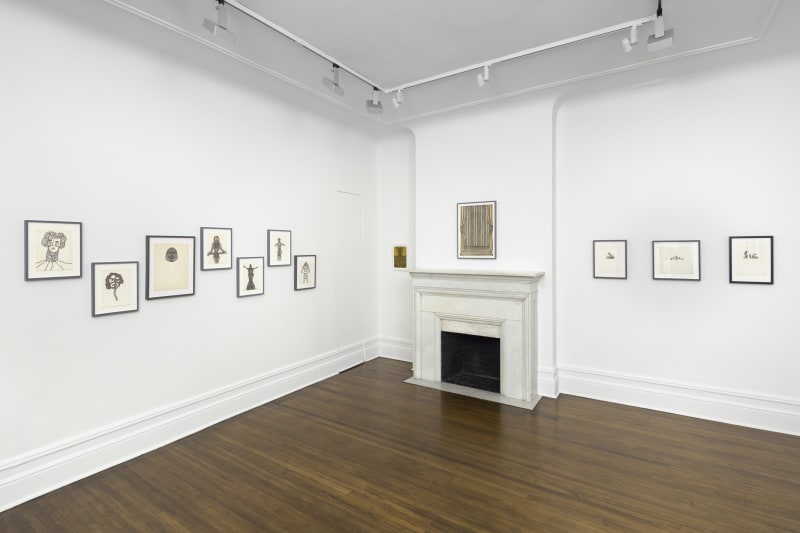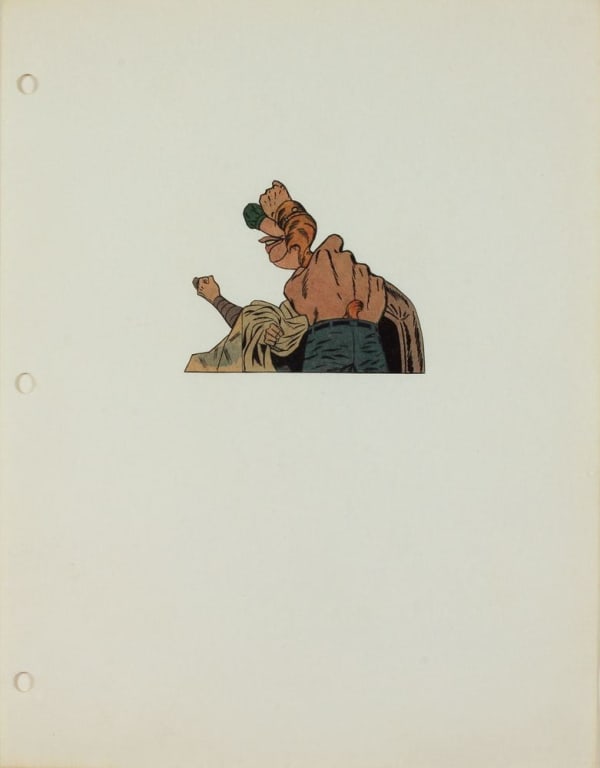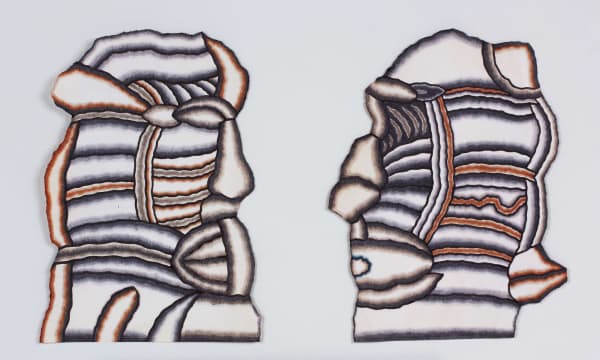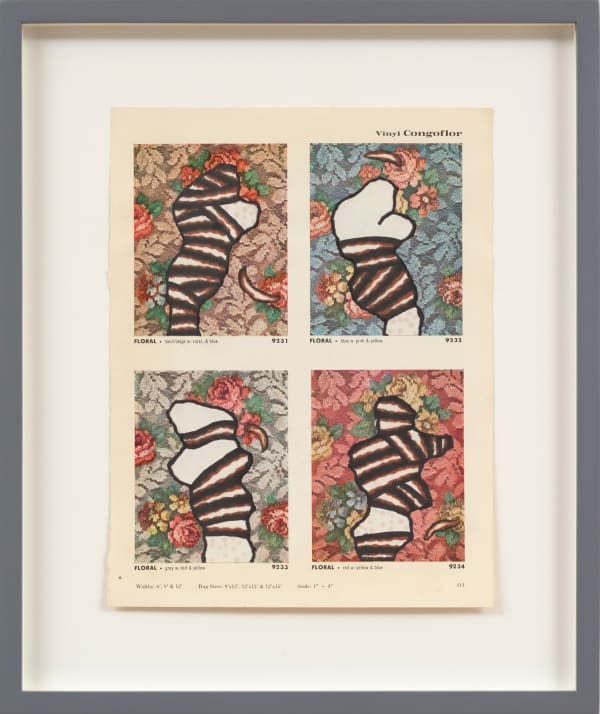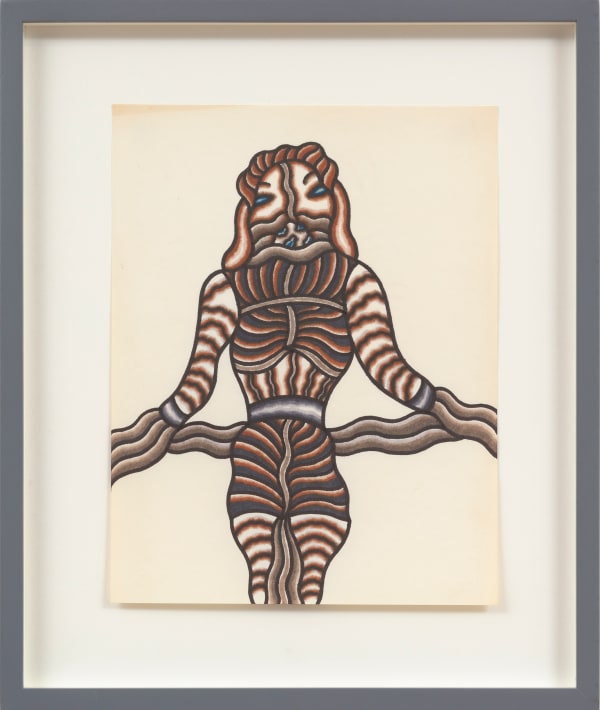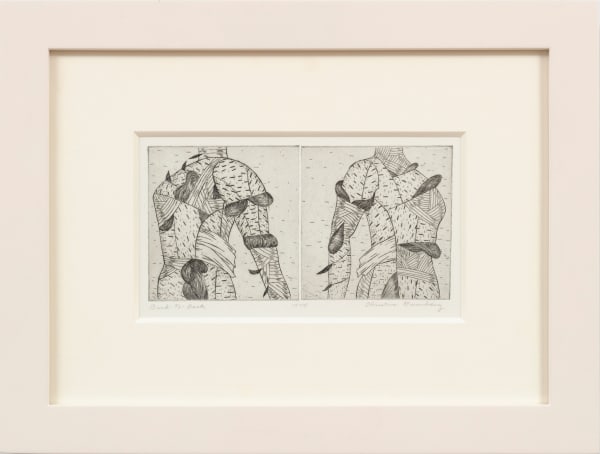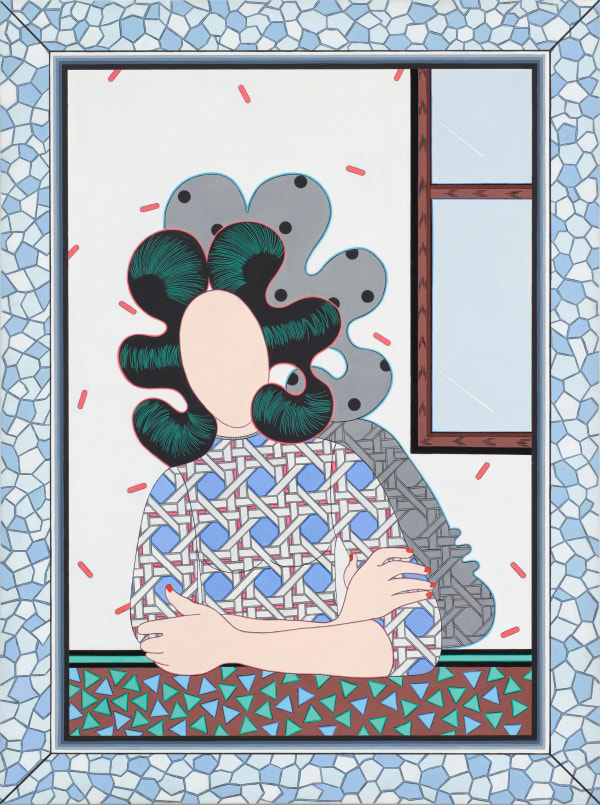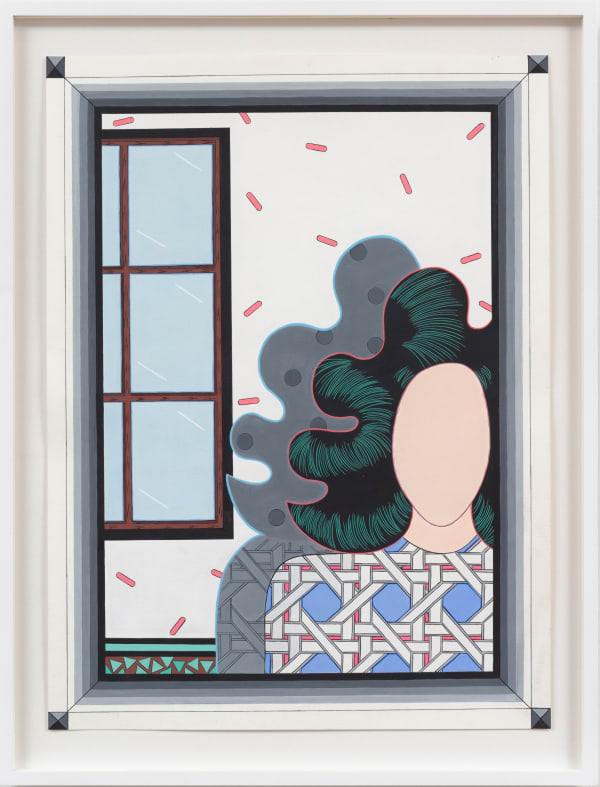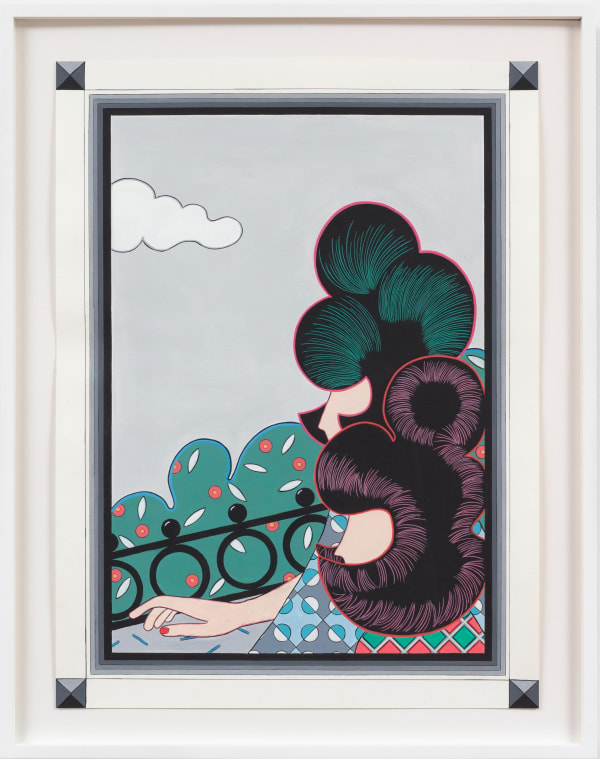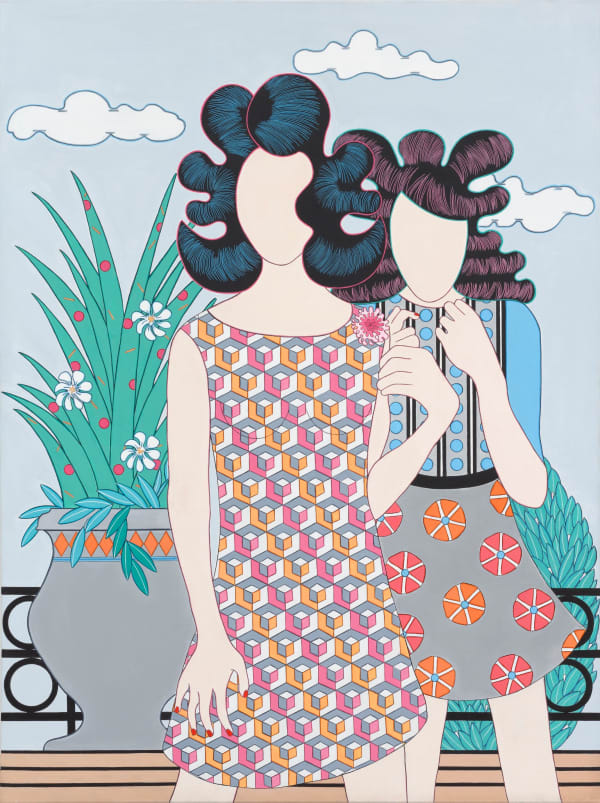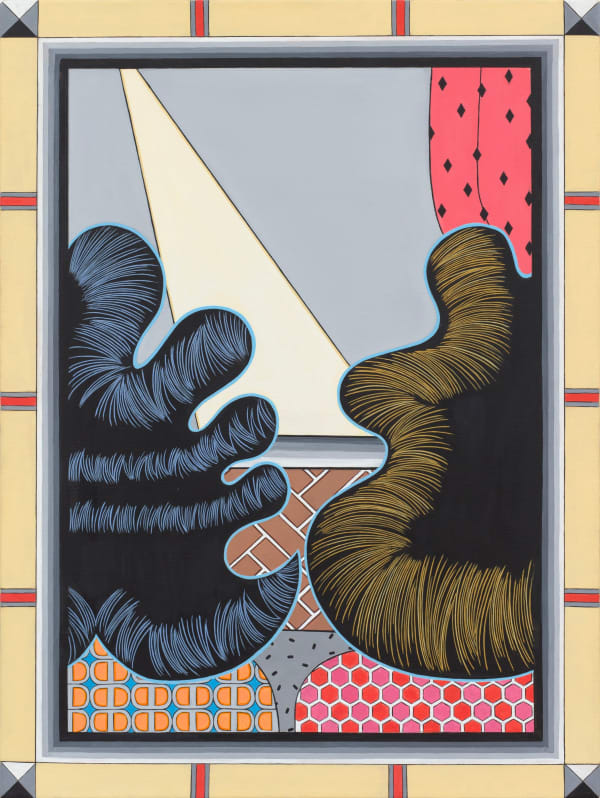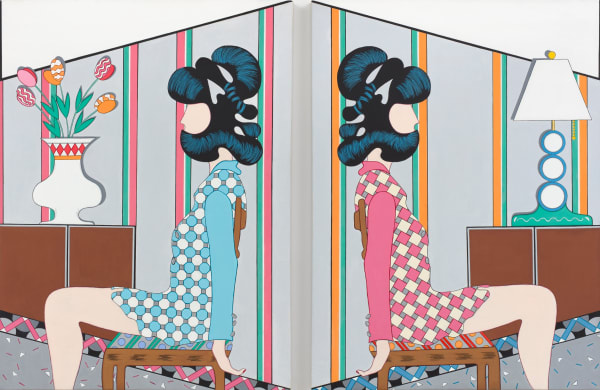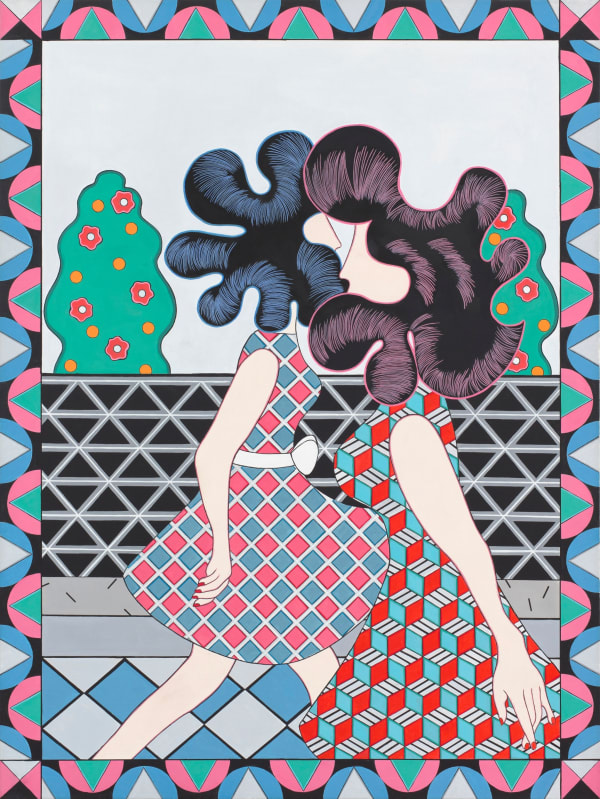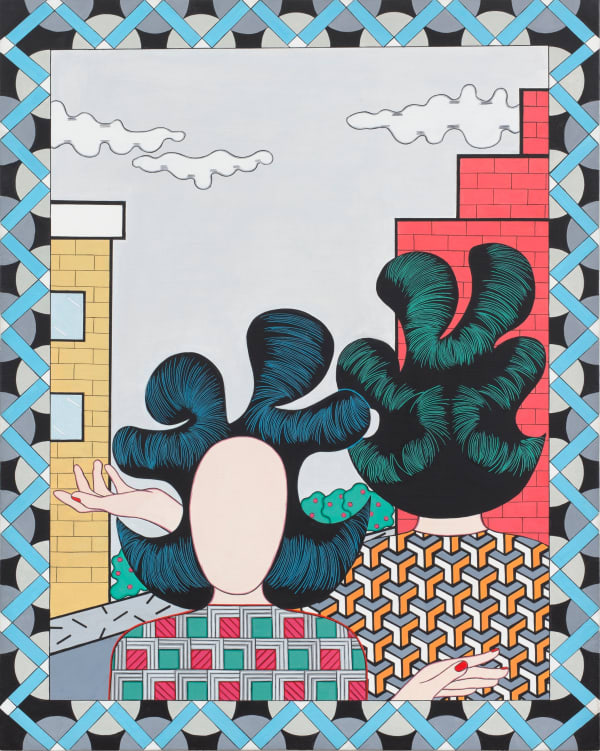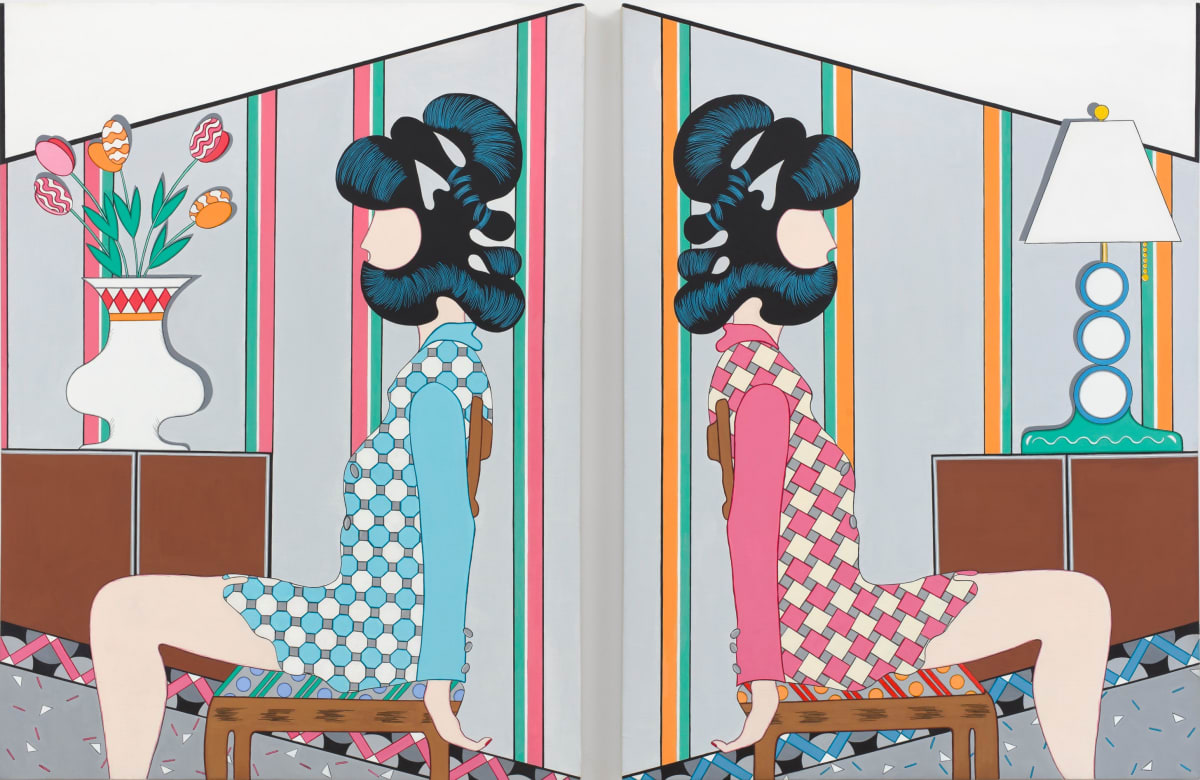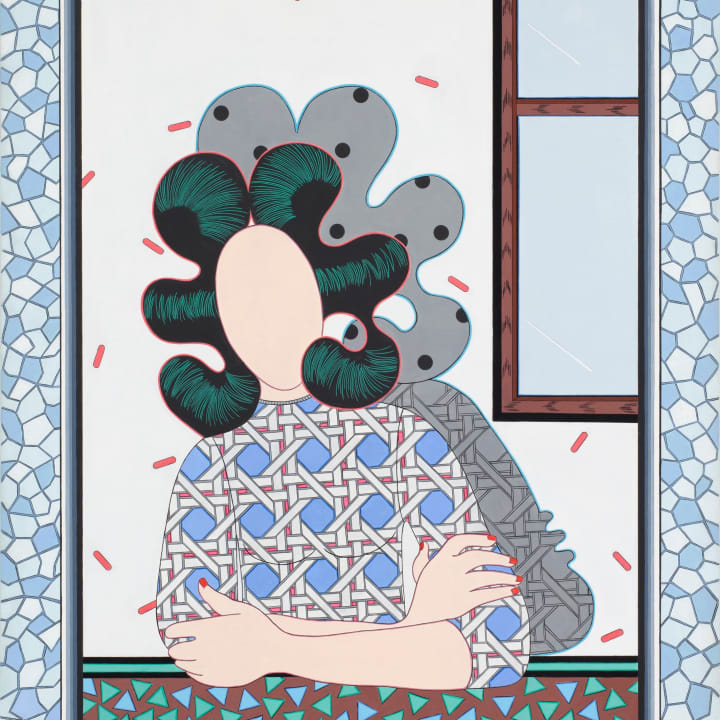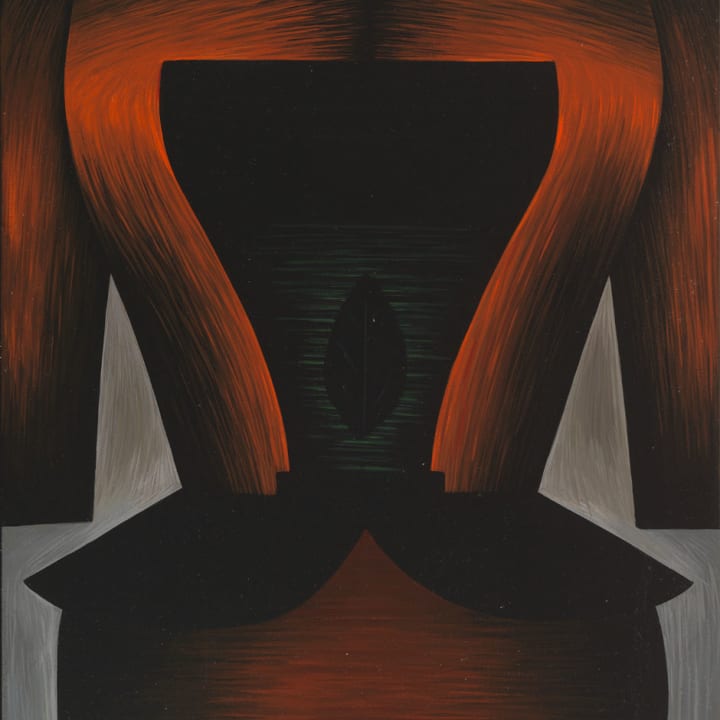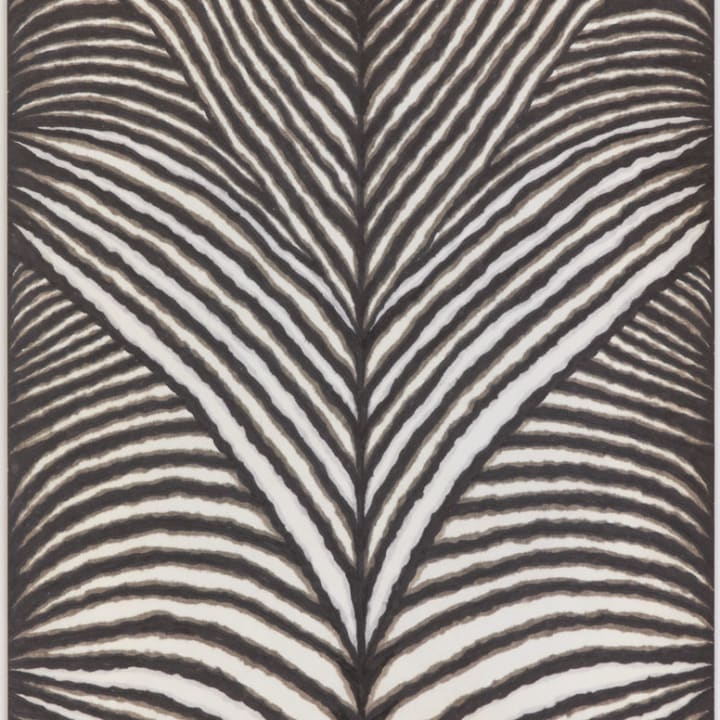BODIES: Ray Yoshida, Christina Ramberg, Deborah Druick
-
Overview
David Nolan Gallery is pleased to present BODIES: Ray Yoshida, Christina Ramberg, Deborah Druick, an exhibition bringing together three intergenerational artists united by their strong interest in pattern, design, figuration, and the human body. Collectively, their work is informed by the human experience and the politics around the representation of the human form, as well as by popular culture. The exhibition is on view from June 6 through July 26, 2024.
Yoshida, Ramberg, and Druick stray from the overarching influence of Abstract Expressionism that especially dominated Yoshida and Ramberg’s generations. Their commitment to formal principles instead lends itself to careful studies of the body that crop it or focus on its minute details. Their mutual interest in the human body is more physiological than illustrative, a commitment that is further demonstrated by their works’ compositional strength which reflects more than just raw emotion.
The influence of popular culture in the form of cartoons and comic books manifests in defined lines and weighty figures for whom a world beyond the canvas does not exist. Like the panels of a comic book, these spaces are contained, unlike the Abstract Expressionist tendency to imply the brushstroke’s extension well beyond the space of the canvas.
All three artists bring their investigations into so-called low art to a high plane that questions our perceptions of the world around us. They do not shy from depicting “private” body parts or “negative” human conditions, like isolation. They employ style for study’s sake, deeply informed by the very principles of art as observation and as a translation of what it means to be human.
Ray Yoshida (b. Kapa’a, Hawaii, 1930-2009) was raised in Hawaii and relocated to Chicago, where he became an enormously important figure in the city’s art scene. He studied at the School of the Art Institute of Chicago (SAIC), where he was possibly influenced by Jean Dubuffet’s famous lecture at The Arts Club of Chicago in 1951 where Dubuffet coined the term “Art Brut.” Yoshida went on to teach at the SAIC, where he nurtured emerging talents like Ramberg and her peers. Artists like Jim Nutt and Gladys Nilsson were friends of Yoshida and likely influenced his work as he influenced theirs. He was a rare teacher; one whose person and art affected young artists around him, and who, in turn, sought to learn from his students, much like Joseph Beuys was famously known to do in Düsseldorf or John Baldessari in California.
Yoshida championed a multitude of source materials, such as pop culture, Eastern art, and self-taught art. His Pop looked different from New York Pop Art; it infused elements of Surrealism and Eastern art with the archetypal symbols of Pop art like the language of advertising. He recognized the power of seemingly insignificant artifacts and sought to share their ability to represent the visual and spiritual lineage of the human story. His rejection of high and low art distinctions and embrace of formal innovation characterizes his work and the way he taught.
It has always been the function of art to stretch the mind some distance beyond the limits of understanding. That ‘distance beyond’ may be spiritual or transcendental or perhaps merely fantastical; somewhere it will overstep the limits of the rational.
–Ray Yoshida
Christina Ramberg (b. Camp Campbell, Kentucky, 1946-1995) was born on a military base in Kentucky. She developed her own highly stylized interpretation of the body under Yoshida’s tutelage at the SAIC. Ramberg continued to champion Yoshida’s radical ideas and enthusiasm for outsider art, and she formed artistic community with her group of friends and peers often known as the Chicago Imagists—including Jim Nutt, Gladys Nilsson, Roger Brown, Barbara Rossi, Ed Paschke, Karl Wirsum, and Suellen Rocca. She collected around 350 dolls, which she displayed on the walls of her apartment. She kept scrapbooks filled with clippings from comics, vintage advertisements, and medical illustrations.
In her too-brief career, Ramberg left a significant body of comic, elegant, and erotically sinister paintings and works on paper. Operating under the influences of Surrealism, her cropped torsi, sharply delineated and bound in extravagant variations of corsets, bandages, and textures exude a conflicted desire and an understanding of the body as an environment that is closely intertwined with its surroundings, shaped by corsets and hairdos as well as behavioral conventions.
Ramberg closely examined the conventions of female presentation, including fashion, hair, and nails, and tackled different feminine subject matters in a time when art by women rose in profile. Equally as committed to formal principles as Yoshida, Ramberg played with scale, color, and proportion to create rich investigations into the female form and its subtleties. Ramberg’s work is a softer, more investigative strain of feminist art that complements its brash counterparts of the 1960s and 1970s.
My aim is to make from my obsessions and ideas the strongest, most coherent visual statement possible.
–Christina Ramberg
Christina Ramberg: A Retrospective, the first comprehensive exhibition devoted to Ramberg in almost 30 years, is currently on view at the Art Institute of Chicago through August 11 and will travel to the Hammer Museum, Los Angeles, October 12, 2024 – January 5, 2025, and Philadelphia Museum of Art, February 8 – June 1, 2025.
Deborah Druick (b. Montreal, Canada, 1951) studied at the Montreal School of Design. In 2020, she was one of sixty artists chosen to be featured in the issue of “New American Paintings” curated by Jerry Saltz. Druick lives and works in New York.
Druick brings a unique dimension to this cross-generational study of the human body. In her work, she addresses gender, self-identification, and female objectification. Through remarkably refined imagery painted with matte acrylic, she explores codes of femininity while also addressing issues of willingness and consent. The anonymity of her women, coupled with the almost-fetishized use of clothing, places Druick in the lineage of feminist art, as both she and Ramberg draw attention to the production of femininity and the power of the female body. While at times Ramberg and Yoshida’s work appear almost interchangeable, Druick’s work is clearly her own world. Yet, like Yoshida, Druick draws from Eastern sources; like Ramberg, she sources from early twentieth-century design.
A significant inspiration for Druick was her decade living in Hong Kong. The experience of living in Asia shifted her art away from the Western view of the woman; she rejects the often-hypersexualized Western stereotype in favor of her characteristic faceless woman. Chinese cultural propaganda images and Japanese Manga have also affected her work, as have street-style fashion and graffiti.
I emphasize the precision and perfection of my subjects using an idealized sense of femininity and beauty. My females are faceless archetypes that elicit questions about self-awareness, identity and sentiment. My work has shifted over time to become more analytical of the female condition. I would say the “Me Too Movement” has played a significant part in this shift of focus. My painting style has also evolved over the years. I would best describe my style as belonging to the “New Surrealist Movement” of female painters using a new visual language to express the objectification of women’s bodies.
—Deborah Druick
-
Installation Views
-
-
 Ray YoshidaUntitled (Comic Book Specimen Series), c. 1969collage on notebook paper11 x 8 1/2 in (27.9 x 21.6 cm)
Ray YoshidaUntitled (Comic Book Specimen Series), c. 1969collage on notebook paper11 x 8 1/2 in (27.9 x 21.6 cm)
framed: 15 7/8 x 13 5/8 in (40.3 x 34.6 cm) -
 Ray YoshidaUntitled (Comic Book Specimen Series), c. 1969-70collage on paper10 1/2 x 11 1/2 in (26.7 x 29.2 cm)
Ray YoshidaUntitled (Comic Book Specimen Series), c. 1969-70collage on paper10 1/2 x 11 1/2 in (26.7 x 29.2 cm)
framed: 15 1/8 x 16 3/8 in (38.4 x 41.6 cm) -
 Ray YoshidaUntitled, c. 1972ink on paperleft: 10 x 6 3/4 in (25.4 x 17.1 cm)
Ray YoshidaUntitled, c. 1972ink on paperleft: 10 x 6 3/4 in (25.4 x 17.1 cm)
right: 9 7/8 x 7 in (25.1 x 17.8 cm)
framed: 14 7/8 x 20 3/4 in (37.6 x 52.7 cm) -
 Ray YoshidaUntitled, c. 1972ink on paper15 3/4 x 12 in (40 x 30.5 cm)
Ray YoshidaUntitled, c. 1972ink on paper15 3/4 x 12 in (40 x 30.5 cm)
framed: 20 5/8 x 16 3/4 in (52.2 x 42.5 cm) -
 Ray YoshidaUntitled, c. 1972ink on paper11 x 8 1/2 in (27.9 x 21.6 cm)
Ray YoshidaUntitled, c. 1972ink on paper11 x 8 1/2 in (27.9 x 21.6 cm)
framed: 15 7/8 x 13 3/8 in (40.3 x 33.8 cm) -
 Ray YoshidaUntitled, c. 1972ink on paper11 x 8 1/2 in (27.9 x 21.6 cm)
Ray YoshidaUntitled, c. 1972ink on paper11 x 8 1/2 in (27.9 x 21.6 cm)
framed: 15 7/8 x 13 3/8 in (40.3 x 34 cm) -
 Ray YoshidaUntitled, c. 1972acrylic on artist board12 x 9 in (30.5 x 22.9 cm)
Ray YoshidaUntitled, c. 1972acrylic on artist board12 x 9 in (30.5 x 22.9 cm)
framed: 15 x 11 1/2 in (38.1 x 29.2 cm) -
 Ray YoshidaUntitledink on paper cutouts on magazine sheet11 x 8 1/2 in (27.9 x 21.6 cm)
Ray YoshidaUntitledink on paper cutouts on magazine sheet11 x 8 1/2 in (27.9 x 21.6 cm)
framed: 15 5/8 x 13 1/8 in (39.7 x 33.3 cm) -
 Ray YoshidaUntitled, c. 1971-72ink on paper11 x 8 1/4 in (27.9 x 21 cm)
Ray YoshidaUntitled, c. 1971-72ink on paper11 x 8 1/4 in (27.9 x 21 cm)
framed: 15 5/8 x 13 1/8 in (39.7 x 33.3 cm) -
 Ray YoshidaUntitled, c. 1971-72ink on paper11 x 8 1/4 in (27.9 x 21 cm)
Ray YoshidaUntitled, c. 1971-72ink on paper11 x 8 1/4 in (27.9 x 21 cm)
framed: 15 5/8 x 13 1/8 in (39.7 x 33.3 cm) -
 Ray YoshidaUntitled, c. 1971-72ink on paper11 x 8 in (27.9 x 20.3 cm)
Ray YoshidaUntitled, c. 1971-72ink on paper11 x 8 in (27.9 x 20.3 cm)
framed: 14 5/8 x 12 5/8 in (37.1 x 32.1 cm) -
 Ray YoshidaUntitled, c. 1971-72ink on paper11 x 8 1/2 in (27.9 x 21.6 cm)
Ray YoshidaUntitled, c. 1971-72ink on paper11 x 8 1/2 in (27.9 x 21.6 cm)
framed: 15 5/8 x 13 1/8 in (39.7 x 33.3 cm) -
 Ray YoshidaUntitled, c. 1971-72ink on paper11 x 8 1/4 in (27.9 x 21 cm)
Ray YoshidaUntitled, c. 1971-72ink on paper11 x 8 1/4 in (27.9 x 21 cm)
framed: 15 5/8 x 13 1/8 in (39.7 x 33.3 cm) -
 Ray YoshidaUntitled, c. 1971-72ink on paper11 x 8 1/4 in (27.9 x 21 cm)
Ray YoshidaUntitled, c. 1971-72ink on paper11 x 8 1/4 in (27.9 x 21 cm)
framed: 15 5/8 x 13 1/8 in (39.7 x 33.3 cm) -
 Ray YoshidaUntitled, c. 1971-72ink on paper11 x 8 1/4 in (27.9 x 21 cm)
Ray YoshidaUntitled, c. 1971-72ink on paper11 x 8 1/4 in (27.9 x 21 cm)
framed: 15 5/8 x 13 1/8 in (39.7 x 33.3 cm) -
 Ray YoshidaUntitled (Comic Book Specimen Series), c. 1969collage on paper11 x 8 1/4 in (27.9 x 21 cm)
Ray YoshidaUntitled (Comic Book Specimen Series), c. 1969collage on paper11 x 8 1/4 in (27.9 x 21 cm)
framed: 16 3/4 x 12 3/4 in (42.4 x 32.4 cm) -
 Ray YoshidaUntitled, c. 1971-72ink on paper11 x 8 1/4 in (27.9 x 21 cm)
Ray YoshidaUntitled, c. 1971-72ink on paper11 x 8 1/4 in (27.9 x 21 cm)
framed: 15 5/8 x 13 1/8 in (39.7 x 33.3 cm) -
 Ray YoshidaUntitled, c. 1971-72ink on paper11 x 8 1/4 in (27.9 x 21 cm)
Ray YoshidaUntitled, c. 1971-72ink on paper11 x 8 1/4 in (27.9 x 21 cm)
framed: 13 1/8 x 15 1/2 in (33.3 x 39.4 cm) -
 Ray YoshidaUntitled, c. 1971-72ink on paper7 x 3 1/4 in (17.8 x 8.3 cm)
Ray YoshidaUntitled, c. 1971-72ink on paper7 x 3 1/4 in (17.8 x 8.3 cm)
framed: 16 1/4 x 15 in (41.3 x 38.1 cm) -
 Ray YoshidaUntitled, c. 1971-72ink on paper24 x 18 in (61 x 45.7 cm)
Ray YoshidaUntitled, c. 1971-72ink on paper24 x 18 in (61 x 45.7 cm)
framed: 27 x 21 1/8 in (68.6 x 53.7 cm) -
 Ray YoshidaUntitled, c. 1971-72ink on paper11 x 8 1/4 in (27.9 x 21 cm)
Ray YoshidaUntitled, c. 1971-72ink on paper11 x 8 1/4 in (27.9 x 21 cm)
framed: 15 5/8 x 13 1/8 in (39.7 x 33.3 cm) -
 Ray YoshidaUntitledink on paperframed: 8 3/4 x 16 3/4 in (22.2 x 42.5 cm)
Ray YoshidaUntitledink on paperframed: 8 3/4 x 16 3/4 in (22.2 x 42.5 cm) -
 Ray YoshidaUntitledacrylic on canvas boardimage: 13 1/4 x 11 1/2 in (33.7 x 29.2 cm)
Ray YoshidaUntitledacrylic on canvas boardimage: 13 1/4 x 11 1/2 in (33.7 x 29.2 cm)
framed: 18 3/4 x 16 7/8 in (47.6 x 42.9 cm) -
 Christina RambergUntitled, 1979ink and graphite on paper6 x 4 in (15.2 x 10.2 cm)
Christina RambergUntitled, 1979ink and graphite on paper6 x 4 in (15.2 x 10.2 cm)
framed: 15 3/4 x 12 3/4 in (40 x 32.4 cm) -
 Christina RambergUntitled (Drawing for "False Bloom"), c. 1971felt-tip pen on paper10 x 8 1/2 in (25.4 x 21.6 cm)
Christina RambergUntitled (Drawing for "False Bloom"), c. 1971felt-tip pen on paper10 x 8 1/2 in (25.4 x 21.6 cm)
framed: 15 3/4 x 12 3/4 in (40 x 32.4 cm) -
 Christina RambergBack to Back, 1974etching4 x 7 7/8 in (10 x 19.8 cm)
Christina RambergBack to Back, 1974etching4 x 7 7/8 in (10 x 19.8 cm)
framed: 11 5/8 x 15 3/8 in (29.5 x 39.1 cm) -
 Christina RambergUntitled (detailed undressing torsos), c. 1970sballpoint pen on paper5 x 8 in (12.7 x 20.3 cm)
Christina RambergUntitled (detailed undressing torsos), c. 1970sballpoint pen on paper5 x 8 in (12.7 x 20.3 cm)
framed: 9 1/2 x 12 in (24.1 x 30.5 cm) -
 Christina RambergUntitled, c. 1980acrylic on masonite15 x 11 1/2 in (38.1 x 29.2 cm)
Christina RambergUntitled, c. 1980acrylic on masonite15 x 11 1/2 in (38.1 x 29.2 cm) -
 Christina RambergUntitled, 1983ink, graphite, and colored pencil on paper11 x 8 1/2 in (27.9 x 21.6 cm)
Christina RambergUntitled, 1983ink, graphite, and colored pencil on paper11 x 8 1/2 in (27.9 x 21.6 cm)
framed: 15 3/4 x 12 3/4 in (40 x 32.4 cm) -
 Christina RambergUntitled, c. 1968felt-tip pen, marker, crayon, and colored pencil on paper11 x 8 1/2 in (27.9 x 21.6 cm)
Christina RambergUntitled, c. 1968felt-tip pen, marker, crayon, and colored pencil on paper11 x 8 1/2 in (27.9 x 21.6 cm)
framed: 15 3/4 x 12 3/4 in (40 x 32.4 cm) -
 Christina RambergUntitled, c. 1967felt-tip pen and colored pencil on tissue paper18 x 11 in (45.7 x 27.9 cm)
Christina RambergUntitled, c. 1967felt-tip pen and colored pencil on tissue paper18 x 11 in (45.7 x 27.9 cm)
framed: 27 1/4 x 20 1/8 in (69.2 x 51.1 cm) -
 Deborah DruickEclipse, 2024Flashe paint and acrylic on linen40 x 30 in (101.6 x 76.2 cm)
Deborah DruickEclipse, 2024Flashe paint and acrylic on linen40 x 30 in (101.6 x 76.2 cm) -
 Deborah DruickAura, 2023Flashe paint and acrylic on paper24 x 18 in (61 x 45.7 cm)
Deborah DruickAura, 2023Flashe paint and acrylic on paper24 x 18 in (61 x 45.7 cm)
framed: 27 5/8 x 21 1/8 in (70.3 x 53.7 cm) -
 Deborah DruickDouble Up, 2023Flashe paint and acrylic on paper24 x 18 in (61 x 45.7 cm)
Deborah DruickDouble Up, 2023Flashe paint and acrylic on paper24 x 18 in (61 x 45.7 cm)
framed: 27 5/8 x 22 in (70.3 x 55.9 cm) -
 Deborah DruickPriority, 2024Flashe paint and acrylic on linen48 x 36 in (121.9 x 91.4 cm)
Deborah DruickPriority, 2024Flashe paint and acrylic on linen48 x 36 in (121.9 x 91.4 cm) -
 Deborah DruickPas de Deux, 2023Flashe paint and acrylic on linen24 x 18 in (61 x 45.7 cm)
Deborah DruickPas de Deux, 2023Flashe paint and acrylic on linen24 x 18 in (61 x 45.7 cm) -
 Deborah DruickAbsent, 2023diptych; Flashe paint on lineneach: 40 x 30 in (101.6 x 76.2 cm)
Deborah DruickAbsent, 2023diptych; Flashe paint on lineneach: 40 x 30 in (101.6 x 76.2 cm) -
 Deborah DruickEn Passant, 2023Flashe paint on linen40 x 30 in (101.6 x 76.2 cm)
Deborah DruickEn Passant, 2023Flashe paint on linen40 x 30 in (101.6 x 76.2 cm) -
 Deborah DruickMisaligned, 2023Flashe paint and acrylic on linen30 x 24 in (76.2 x 61 cm)
Deborah DruickMisaligned, 2023Flashe paint and acrylic on linen30 x 24 in (76.2 x 61 cm)
-
-
News
-
Press
-
Artist
